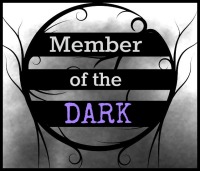Coming to us from June 6, 2019! Not much else I can say about this one. Doesn’t have the same controversy factor as the previous 2 and compared to #1 it’s . . . Well, you’ll see next week.

Wolverine
One power that I use a lot in War of Nytefall is the regenerative powers of the Dawn Fangs. They can heal quickly and keep fighting as long as their head and enough limbs are attached. That second part is debatable for some characters too. Parts can be reattached if pressed to the wounds as well. It means that their fights can be very bloody, but only because of how I use this power. I consider every usage to make sure it still fits, which makes me realize how healing factors might not be as easy to write about as I thought. It can fall into abuse before you know it. So, what are some things to consider?
- Consistency of the healing factor is key in terms of rate and severity of wound recovery. You can’t have them struggle to heal a small knife wound to the arm while rapidly healing half of their body getting blown off. Not without explaining why small wounds take longer than large wounds. You would also need to make sure it stays that way. Otherwise, it comes off as a power that works only as well as the story needs it and readers will lose interest in the character.
- Not every character with a healing factor is the time to rush into battle and take on damage. Being able to regenerate doesn’t mean they don’t feel pain. They still need the right kind of personality to be like Wolverine or Deadpool. For example, a hero who doesn’t like getting hurt will be more inclined to avoid damage even if they can heal it. Have them act accordingly.
- Leaping off #2, you have to be careful in making a clone of popular healing factor characters. The rest of the powers and the name might be different, but you need to avoid giving them the same personalities. Not easy when you have them revel in being hard to kill. You can still go this way, but you have to prepare yourself for the comparisons and find some other way to make them stand out.
- Consider downsides to having a healing factor because they come up more often than you think. Your audience has thought of them though. Can someone with regeneration lose a tooth? If not then do they still have their baby teeth? Giving blood or anything with an extended piercing of the skin could pose a problem. Has the healing factor made it that they are subconsciously less careful? This could lead to them taking unnecessary risks. Can they shave since hair can be regenerated as well?
- If you do have a combat-oriented character with a healing factor then really have some fun with it. Downplaying it can work at times, but there should be at least one time where the power gets a ‘spotlight’ moment. Fighting heroes will have these much more than others. They love the thrill of battle, so have them abuse their power. As long as it’s consistent, of course.
- While not something to do a lot, regeneration and healing factors can open the door for some extreme physical comedy. There’s no worry about permanently hurting or killing these heroes. So, accidents can happen or another hero can lash out in comedic rage with no concerns. Much of this requires certain characters, story tones, and author preferences. So, do this only if you’re sure it makes sense.
- At some point, you need to establish a threat to this character. They can’t spend the entire adventure feeling invulnerable and the audience shouldn’t think they are either. It can be anything that bypasses their hardiness. You can have special weapons, magic, psychic attacks, devices that block the power, and any number of things that forces the character to think with more caution. This is how you can evolve the hero or villain beyond their regenerating starting points.





Powers can be tough to balance. We have to keep something back that can prevent the character from being all powerful. I think I struggled with that point more with Jason Fogg than any other I’ve created. Then I figured out I could freeze him.
LikeLike
Healing factors seem to have this problem in spades, but it can be really subtle.
LikeLiked by 1 person
Wow! Great post! You thought of some things I’d never thought of before (like the tooth issue). What a tough issue! Kudos to all who tackle it. I’ve never written this sort of character before.
LikeLike
Thanks. I’m running a whole cast of regenerators in my series now. Kind of evens the playing field.
LikeLike
You’re right about the comedic value (accidental or on purpose). I’ve found myself LOL in the middle of brutal fight scenes.
LikeLike
Gotta love humor even when it’s dark. 😁
LikeLiked by 1 person
I think the biggest downside would be how to do away with this character especially if it is a villain.
LikeLike
There’s usually a limit. Decapitation, trap them in something, disintegration, etc.
LikeLiked by 1 person
Oh, delightful.
LikeLike
Reblogged this on Claire Plaisted – Author and commented:
Some great advice here…A must-read for those authors writing characters with healing factors.
LikeLike
Thanks for sharing.
LikeLiked by 1 person
Welcome. Another great post.
LikeLike
A great post, and much food for thought, Charles. I’ve not written characters with regeneration properties, but when I do, I will bear these thoughts in mind.
LikeLike
Glad to be of help. 😁
LikeLike
I might have answered this with your initial post, but… I think you can handle this as a progression. So first they receive a small wound and it heals unusually fast. Then they get stabbed in a fight (but still not a fatal wound) and it heals even faster. And so on until you have that major set-to in the finale and they are able to survive what should have been mortal injuries.
You also can place limits, such as one of my Champions characters who could regenerate only if she went into a meditative trance. I felt it was important to maintain balance in the game, and also in Champions you could build in limits like that to make the power cheaper.
As for threats to a character, you again can place limits. Regeneration might not keep them from getting a serious illness. And if they are poisoned, would regeneration save them? I think it’s up to the author to ensure balance.
LikeLike
From what I’ve seen, the type of regeneration and healing depends on the author. The slow build could work to introduce. I’ve seen it where the level of injury requires certain time periods to heal, which means they need to still be careful. Not a useful hero if you’re trying to regenerate while the villain claims victory.
Disease and poison are tough ones. Healing faster can minimize or negate these most times. Consider that they cause damage to the body, which a healing factor would take care of. This is why many authors use mental or magical versions to override.
Having the power grow by injury would bring up a question of how does it stop. Can the character not even get hurt because they heal faster than they get injured?
LikeLiked by 1 person
If they can’t get injured at all, that would be invulnerability rather than regeneration, though.
LikeLike
It would transform into it, but it’s a fine line. One could argue that it’s only invulnerability if the weapons don’t pierce the skin. This would be that the wound is gone almost instantly, but pain can remain.
LikeLike